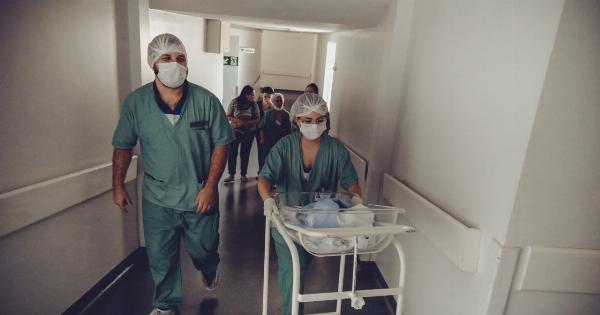When it comes to reproduction, sperm plays a crucial role in fertilizing an egg to create new life. This microscopic cell carries the genetic material that determines the traits and characteristics of offspring.
But beyond its reproductive function, sperm holds a multitude of secrets that are both fascinating and intriguing. In this article, we will delve into the hidden world of sperm, exploring its journey, structure, and unique properties.
The Journey Begins
The journey of sperm starts in the testes, which are responsible for producing and storing these tiny cells.
In a process called spermatogenesis, immature sperm cells undergo several stages of development to eventually become mature and functional spermatozoa. Once fully developed, they move to the epididymis, a long, coiled tube where they further mature and gain the ability to swim.
Anatomy and Structure
Sperm cells are incredibly tiny, measuring only about 50 micrometers in length. They are made up of three main parts: the head, midpiece, and tail.
The head contains the genetic material, including chromosomes, which carry the instructions for embryo development. The midpiece is responsible for generating the energy needed for sperm movement, while the tail, also known as the flagellum, propels the sperm forward in a whip-like motion.
Superb Swimmers
One of the most remarkable characteristics of sperm is their ability to swim against all odds. Despite their microscopic size, they possess a remarkable tail that enables them to navigate through the female reproductive tract towards the egg.
Powered by the midpiece, sperm can move at an incredible speed, reaching up to 4 millimeters per minute. Along the way, they face numerous obstacles, including sticky fluids and narrow passages, yet they persistently push forward, driven by their determination to fertilize an egg.
In Search of the Egg
Once released into the female reproductive system during intercourse or artificial insemination, sperm embark on a challenging journey to find and penetrate the egg.
They encounter a series of barriers, such as cervical mucus and the complex anatomy of the fallopian tubes. Despite these obstacles, millions of sperm are released during ejaculation, increasing the chances of reaching the egg.
The Ovulation Race
Sperm are incredibly strategic in their quest to fertilize an egg. They have the ability to detect chemical signals released by the female reproductive system, guiding them to the ovulated egg.
Using their incredible swimming capabilities, they compete against each other in what’s known as the “ovulation race.” This race is a battle for survival, as only one sperm can fertilize a single egg, ensuring genetic diversity in offspring.
Survival in Hostile Environments
The female reproductive tract is not always a welcoming environment for sperm. The acidity of the vagina and the cervical mucus can pose significant challenges. However, sperm have evolved various mechanisms to survive these hostile conditions.
They can alter the pH of their surroundings by releasing alkaline substances, neutralizing the acidic environment. Additionally, they can employ special enzymes to break down the barriers of cervical mucus, allowing them to continue their journey towards the egg.
The Egg’s Selection Process
Interestingly, the egg also plays an active role in selecting the sperm that will fertilize it. The surface of the egg possesses specific receptors that attract and bind to certain molecules on the sperm’s surface.
This process, known as sperm-egg recognition, ensures that only genetically compatible sperm can penetrate the egg, reducing the risk of genetic abnormalities.
Beyond Reproduction
While the main purpose of sperm is reproduction, recent studies have unveiled additional roles that these tiny cells play in the female reproductive system.
Research suggests that sperm can influence female physiology, including changes in the immune response and hormonal regulation. It is believed that some of the proteins released by sperm during ejaculation interact with the female body, potentially impacting fertility and successful pregnancy.
Sperm Preservation and Storage
In the field of reproductive medicine, the preservation and storage of sperm have become essential. This is particularly important for couples who may face fertility challenges due to various reasons.
Sperm freezing techniques, such as cryopreservation, allow sperm to be stored for extended periods. This procedure involves reducing the temperature of sperm to -196°C, preserving their viability for future use.
Conclusion
The secret world of sperm is a captivating realm filled with remarkable characteristics and abilities.
From their incredible swimming capabilities to their strategic race towards the egg, sperm showcases the complexity and beauty of reproductive biology. Beyond their reproductive function, ongoing research continues to unveil the potential influence of these tiny cells on female physiology.
Understanding the intricacies of sperm contributes to our knowledge of reproduction and fertility, unlocking new possibilities for reproductive medicine.































